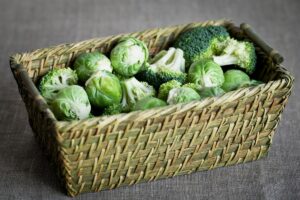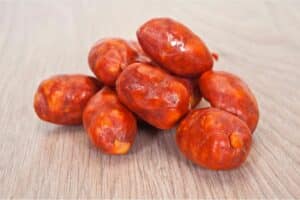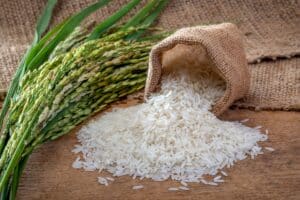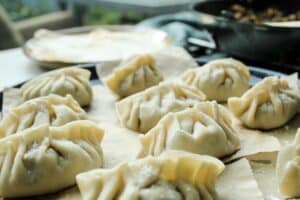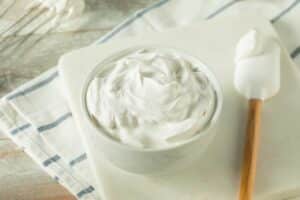People have been enjoying cinnamon for thousands of years. This popular spice found its way to Europe and Africa via the Silk Road, an expansive trading route established in 130 B.C.E.
Nowadays, it’s challenging to find a pantry that doesn’t contain some type of cinnamon, whether it’s tightly rolled cinnamon sticks or finely ground cinnamon powder. That’s because cinnamon spice is often added to sweet dishes like pastries and hot beverages like coffee.
Cinnamon Sticks vs Ground Cinnamon
The main difference between cinnamon sticks and ground cinnamon is appearance. Cinnamon sticks are solid, twig-like forms of cinnamon spice, whereas ground cinnamon is a refined, powder-like version created by crushing and grinding cinnamon sticks.
- Appearance: Cinnamon sticks are rod-like forms of cinnamon spice, while ground cinnamon is a fine powder.
- Usage: Cinnamon sticks add flavor to liquid-based dishes and beverages. It’s removed before those serving those meals and drinks. Ground cinnamon is added to desserts, stews, and drinks, but it’s not removed before serving.
- Price: Whole cinnamon sticks cost an average of $30 per pound, whereas ground cinnamon typically costs about $10 per pound.
You may also be interested in: Spicy brown mustard vs dijon comparison.
Comparison Table Between Cinnamon Sticks and Ground Cinnamon
| Feature | Cinnamon Sticks | Ground Cinnamon |
| Appearance | Elongated, rod-like, typically 10 inches or shorter, dark brown with an orange tint | Fine, powdery, naturally a golden brown color |
| Flavor | Slightly sweet, earthy, spicy | Slightly sweet, somewhat spicy, more subdued flavor than cinnamon sticks |
| Shelf Life | 3 – 4 years | 3 – 4 years |
| Usage | Used to flavor teas, soups, wine, and other liquids | Used to flavor pastries, cookies, cakes, beverages, and stews |
| Price | About $30 per pound | About $10 per pound |
Can You Substitute Cinnamon Sticks for Ground Cinnamon?
It’s possible to substitute cinnamon sticks for ground cinnamon, but you may need a mortar and pestle or a food processor to do so. After all, ground cinnamon is the result of grinding cinnamon sticks into a fine powder-like consistency.
You can substitute cinnamon sticks for any recipe that calls for ground cinnamon. If you’re attempting to flavor a liquid-based dish (soups, stews) or a beverage, you may not need to grind cinnamon sticks into a powder to use them as a substitution for ground cinnamon.
Depending on the vibrancy of the cinnamon flavor you’re looking for, you can add a single cinnamon stick to a hot beverage or simmering soup and let it sit for several minutes or hours. Naturally, the longer you allow it to remain in your dish or drink, the more flavor it’ll impart.
Still, if you’re using whole cinnamon sticks in place of ground cinnamon, be sure to remove the stick before consuming your beverage or meal. Eating a whole cinnamon stick can cause digestive issues, vomiting, and liver damage.
When preparing dishes that require a sprinkling of ground cinnamon (such as cinnamon rolls, pancakes, or other pastries), you’ll want to smash and grind your cinnamon sticks until they resemble store-bought ground cinnamon.
Add this powder-like substance just as the recipe instructs, leaning slightly toward the lighter side. Cinnamon sticks can have a more pronounced flavor than ground cinnamon, so exercising restraint is an excellent idea when using them as a ground cinnamon substitute.
What Are Cinnamon Sticks?
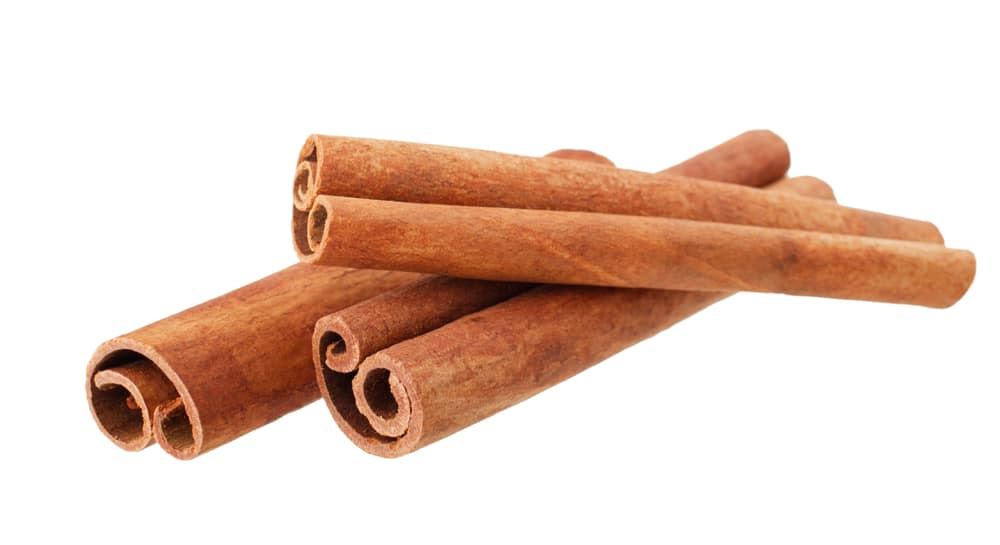
Cinnamon sticks are a form of dried bark. They’re derived from the interior bark of Cinnamomum zeylanicum and Cinnamomum cassia trees. These plants are native to China and Sri Lanka. That said, they’re hardy enough to grow well in multiple regions throughout the world.
The harvesting method for cinnamon sticks differs depending on the region, but a few standard harvesting practices exist.
One of the most popular ways to harvest cinnamon sticks is to cut cinnamon trees at their base when they’re about two years old. Small shoots then grow out from the tree’s stump, resulting in thinner stems that are more flavorful and easy to harvest.
Cinnamon growers cut these shoots off the stump when they’ve reached several feet in height. They peel the bark from the sprouts and lay them in flat, sunny areas to dry. During the drying process, the moisture-rich bark dehydrates and curls into itself.
This process forms the quill-like structure associated with cinnamon sticks. Depending on the desired length of cinnamon sticks, manufacturers either leave them as they are after this process or cut them into identical twig-like shapes, typically 10 inches or shorter.
How to Use Cinnamon Sticks
You can use cinnamon sticks to add flavor to almost any dish, which is why so many ethnic cuisines include it as a key ingredient. Some of the most common recipes that call for cinnamon sticks include:
- Hot chocolate
- Moroccan stews
- Chile Verde de Puerco
- Pork pho
- Sangria
- Chai tea
Using cinnamon sticks is a straightforward process. That said, usage varies from dish to dish. For example, you can use a cinnamon stick as a coffee stirrer. The hot coffee surrounding the cinnamon stick will absorb some of the stick’s natural flavors.
However, if you’re adding a cinnamon stick to a soup or stew, you’ll want to place the entire stick inside the boiling liquid and let it steep for several minutes or a few hours. The precise amount of time varies depending on how much cinnamon flavor you’d like to impart into the dish.
When you’re satisfied with the taste of the meal you’re cooking, you can use a pair of tongs to remove the cinnamon stick. Place the used cinnamon stick onto a paper towel or dishcloth and allow it to cool. When it’s room temperature, you can dispose of it.
What is Ground Cinnamon?
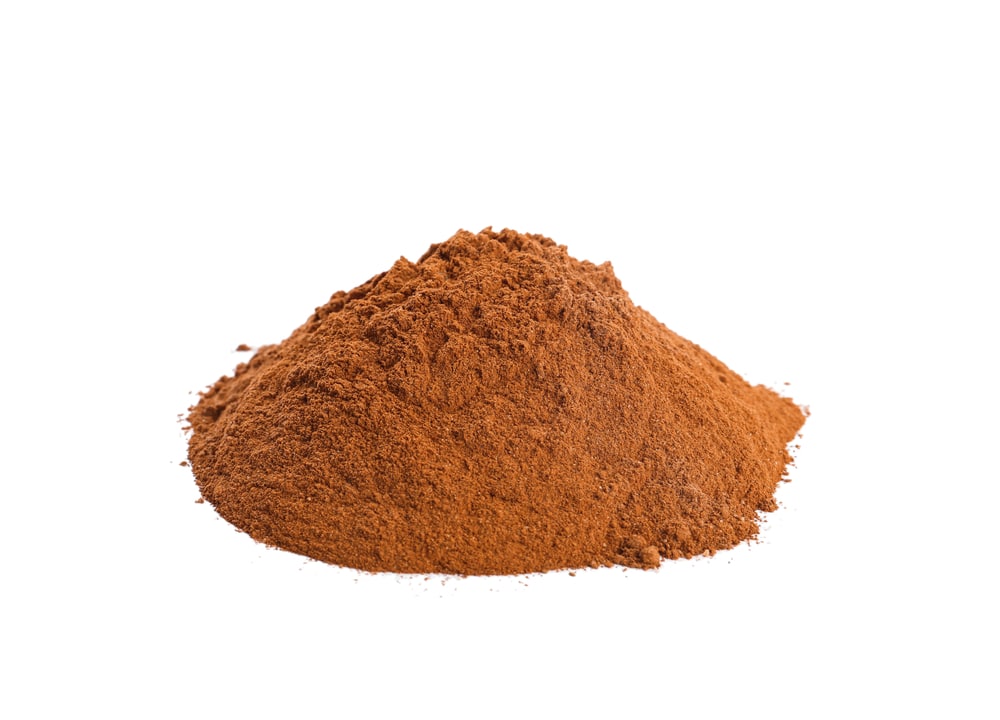
Ground cinnamon is also derived from Cinnamomum zeylanicum and Cinnamomum cassia trees. In fact, ground cinnamon is made from dried cinnamon bark, also known as cinnamon sticks.
When these sticks are moisture-free, they’re sometimes loaded into massive food-grade grinders. These grinders crush the cinnamon sticks into a fine powdery substance – ground cinnamon.
Home cooks can create ground cinnamon from cinnamon sticks by smashing the sticks in a mortar or using a food processor. Cinnamon sticks are very dense, so it may be best to use a food processor to achieve a delicate, powdery final texture.
How to Use Ground Cinnamon
Ground cinnamon has a variety of uses. You can add a pinch of it to tea, coffee, or hot chocolate to imbue the beverages with a slightly sweet flavor. However, one of the most popular applications for ground cinnamon is adding spice to desserts.
Cinnamon rolls might be the most popular recipe that utilizes ground cinnamon spice. After creating the dough for these rolls, bakers divide the dough into sections, flatten it, and cut it into strips. Each strip is then sprinkled with ground cinnamon.
After that, these strips are rolled into themselves, forming concentric dough balls. After baking, the result is a flaky pastry with internal layers of cinnamon.
Ground cinnamon is also a popular addition to pancake batters, muffin mixes, and cake batters. Many of these recipes only call for one or two teaspoons of ground cinnamon – a little goes a long way!
You can also sprinkle ground cinnamon atop oatmeal, cereal, or muesli to give it a distinctly sweet-yet-spicy flavor.
Notably, cinnamon spice is hydrophobic, meaning that it repels water.
Consequently, incorporating ground cinnamon into water-based dishes may take time and agitation. If you’re thinking of enjoying a lovely cinnamon coffee, be sure to add the cinnamon to your cup before pouring your hot coffee over it.
You may need to stir continuously for several minutes to spread the cinnamon throughout the drink. Shaking your cinnamon-laced concoction (inside an air-tight tumbler or container) is also an excellent way to ensure the cinnamon combines well.
The Origin of Cinnamon
Understanding where cinnamon comes from may help you develop a stronger appreciation for this golden brown spice. But tracing the origins of cinnamon spice can be challenging, as cinnamon quickly spread throughout the world during ancient times.
True cinnamon plants (Cinnamomum verum) come from the island nation of Sri Lanka. As such, they can’t spread to other regions without the help of sailors and traders.
However, the cinnamon described in Ancient Egyptian texts didn’t come from Sri Lanka. Instead, it likely came from the eastern regions of China. The type of cinnamon (Cinnamomum cassia) was used for embalming rituals and is still present in many Egyptian mummies today.
By the birth of Ancient Greece, cinnamon was an expensive and sought-after spice. It remained one of the priciest spices up until the 1800s, with true cinnamon trees finding their way to faraway regions in South America and the Caribbean.
Final Thoughts
The primary difference between cinnamon sticks and ground cinnamon is appearance. Cinnamon sticks are solid strips of bark harvested from cinnamon trees. Ground cinnamon is a fine, powdery substance created by smashing and grinding cinnamon sticks.
Both are used to flavor various dishes and beverages. That said, cinnamon sticks are typically used to add flavor to meals and are removed before serving. Ground cinnamon isn’t removed before serving. When it comes to cinnamon sticks vs. powder, they can often use them interchangeably if you’re willing to make a few changes to your dishes and recipes.


